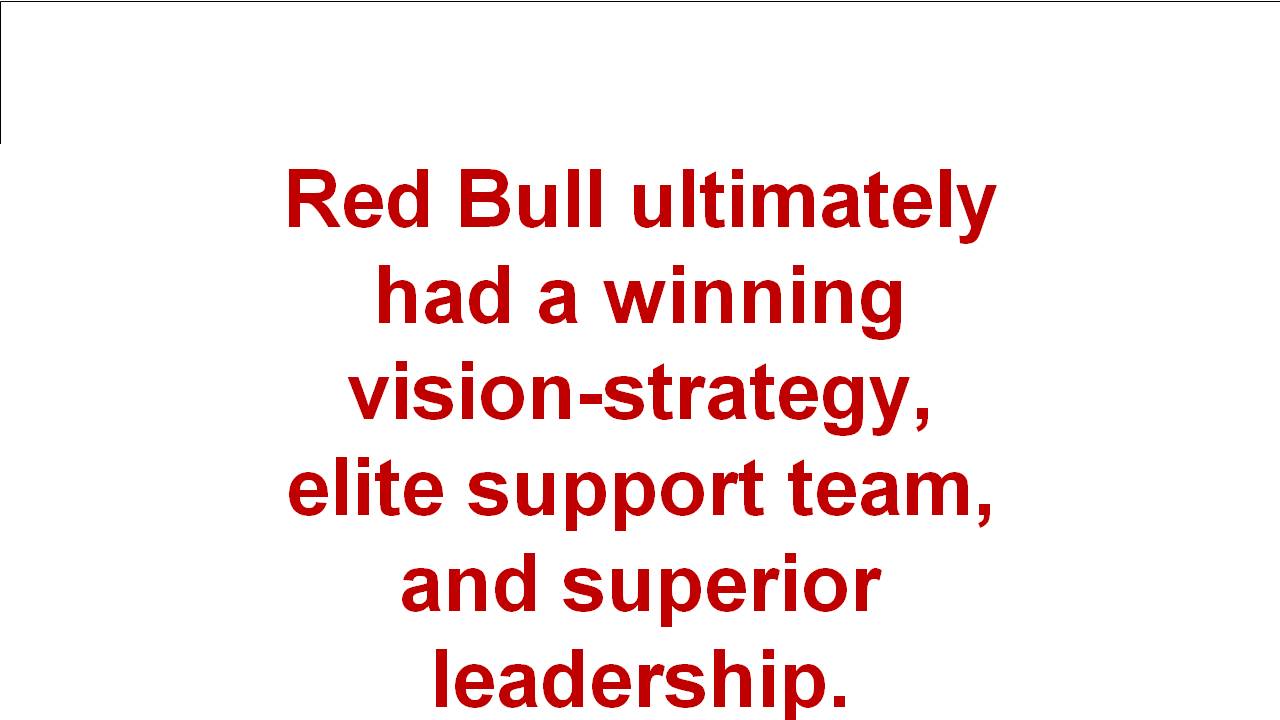by Peter A. Arthur-Smith
“How Austrian, Dietrich Mateschitz, made Red Bull the dominant force in Formula One and reached 1.5 Billion viewers each season,” by Joshua Robinson and Jonathan Clegg, Wall Street Journal Exchange article, March 2024

Apparently a bit of good fortune had Austrian international salesperson, Dietrich Mateschitz, drinking Krating Daeng, a Thai truck driver pick-me-up, in Thailand during 1982. Its name loosely translates into Red Water Buffalo. He drank it to offset his jet lag. The story goes that it did and more besides, so he decided to tweak its formula and turn it into a carbonated drink called Red Bull. His formulation was so successful that it made him into a billionaire and gave him the financial resources to enter the Formula One racing car field some twenty years later.
Mateschitz was a complete outsider to Formula One (F1) racing, when he chose to join such pre-eminent companies in that genre such as Mercedes, Ferrari and McLaren. He’d already upended the soft drinks market with Red Bull and was selling 300 million cans worldwide by dispensing with traditional modes of advertising such as print and TV ads. Instead he opted for more unorthodox, low-key campaigns that supported hi-rolling sports such as skateboarding, cliff diving and ultra-marathon events. Formula One (F1) would be yet another version of that genre offering high drama and high risk possibilities of death.
After entering the F1 field, Red Bull was just another sponsor for the next ten years. He had its Red Bull logo emblazoned on car tail fins and sleek bodies, even though the teams he sponsored were not claiming the No 1 spots. Fortuitously Ford’s Jaguar F1 team pulled out of the series in 2005 and so Mateschitz bought its entire outfit for £1 sterling.
Again he took a disruptor approach toward the F1 industry. Instead of low key team-support trailers, he introduced a three-tier trailer by way of a hydraulic-raising roof. When this roof was raised, it created a party space for selected revelers to party every night in support of Red Bull Racing. It was called the Energy Station. It also hosted a small group of young women called the “Formula Unas,” as well as a splashy tabloid called “The Red Bulletin.” Apparently by 2011, Lewis Hamilton, a seven-time driving world champion, scoffed at Red Bull having no business to be in F1.
In response, Mateschitz hired the youngest team “boss” in F1 history. He hired a 31 year old Brit, Christian Horner with no experience in F1, to transform this brash Red Bull outsider into a real world champion contender. Horner had no college degree, but his performance in lower tier car racing was enough to convince Mateschitz to fly him to Austria for lunch. When Horner was announced as team “boss” the Red Bull Team initially walked out in disgust.
With the right venture strategy coming into view, a noisy publicity campaign, and his sights set upon winning the championship, Mateschitz started building a highly talented leadership team around Horner. He then hired Adrian Newey a highly influential race-car designer. He was introduced as Red Bull’s chief technical officer (strategist) in November 2005 with the aim of building their car into a contender with five years.
Newey delivered on that timeline by exploiting a sweeping set of technical rule changes and took Red Bull to the front of the pack. By 2010 he produced the RB6 design that was so superior aerodynamically that his RB cars could take many hi-speed corners at “full throttle.” It was so much more effective aerodynamically, mechanically, and engine-wise that it just remained to locate the fourth vital piece – the right driver. By that time they already had four successive world championships, which then placed them among the elite.
That run was broken by Mercedes with a series of seven championships. Red Bull then landed its fourth vital piece, Max Verstappen, a 26 year old Dutchman, to complement its other three key advantages. Now it is pursuing its second dynasty with its next series of wins starting in 2021, where it has taken the checkered flag in 75% of races since the start of that season.
Although Mateschitz passed away in 2017, he left a legacy of three vital strategic components: a championship vision and winning strategy, a strong technical support team – ultimately with the right driver, and the right strategist-leader team to orchestrate success. Providing they can hold such a venture together, Red Bull will no longer be an outsider but become part of the establishment – for better or for worse! The trick will be for Red Bull to transform those four vital winning components in to a more long term dynasty. That issue will form the basis for a future related article.
